Setting Up A Birthing Pen For Your Goats
This guide on setting Up A Birthing Pen For Your Goats will help you prepare for goat breeding and goat kidding. Having a dedicated space for kidding is a great way to help you relax as well as your doe and new kids.
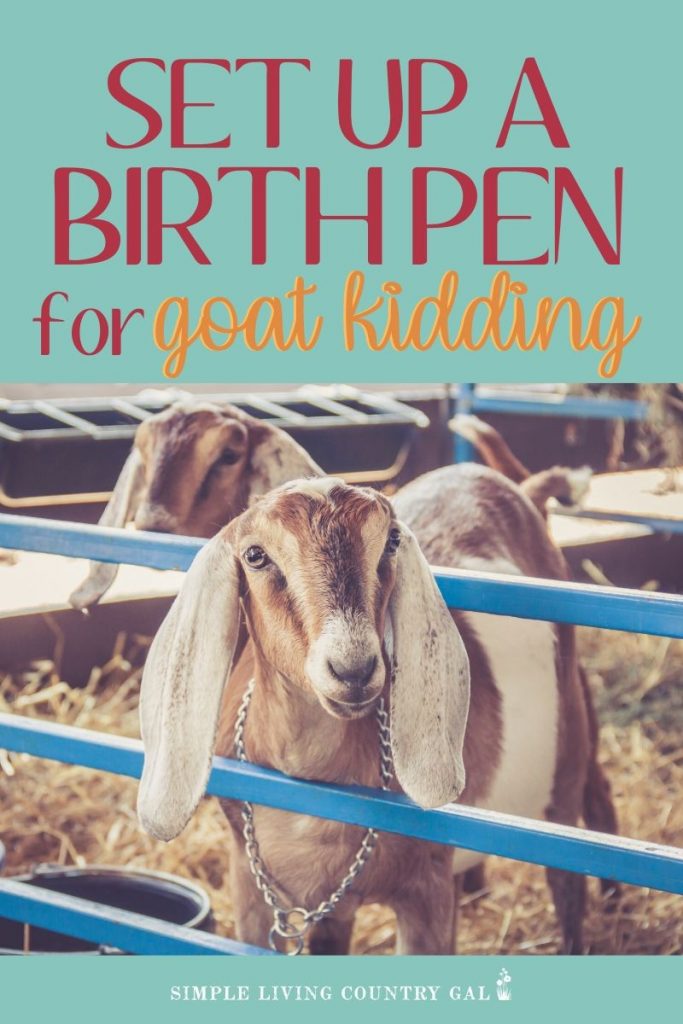
If you breed more than one goat, things can get a bit chaotic when goat kidding season arrives. Being prepared is key to keeping things calm for you, your does, and even your new baby kids. On our homestead, we have found that having a private area for our goats to kid not only calms them down but keeps things safe and healthier for the kids when they do arrive.
Having a separate area prepared is also helpful when there are kidding difficulties that require your help. Nothing is more distracting than trying to deliver a stuck kid while another goat is nibbling your hair. By setting up a birthing pen for goat’s kidding is not only easy but an important part of any safe and successful breeding system.
This temporary setup is a goat fence idea that you can use every kidding season.
Disclaimer: In accordance with FDA guidelines, the information and products offered on this website are not intended to diagnose, treat, cure, or prevent any disease. Before administering any medication to your animals I encourage you to consult a veterinarian.
How old should goats be before breeding?
Before breeding does you will want to wait until they are at least 10-12 months of age. There are two main reasons for this.
- Physically mature enough to carry kids.
- Large enough to hold the weight of the buck when breeding.
Since we raise large breed goats, Nubians, we prefer to wait until our does are at least one year of age before putting them in with our buck. This will ensure that they can handle the weight of our big Nubian buck along with the maturity needed to mother goat kids.
What is a good goat barn layout?
True to our homesteading form, we did not build a new barn from scratch but instead converted what we already had: a large shed. The shed worked well the first year, but as our herd grew we added on one then another addition until our original shed was a goat barn.
READ: HOW TO CONVERT A SHED INTO A GOAT BARN
Our barn layout is set up specifically for goat raising and is broken into three parts.
#1. The left side of our barn is an open pen that is for our junior does who are not quite old enough to be bred.
#2. The right side of the barn, is also an open pen that is for our older does that are ready to breed in the fall. This will allow us to breed in the barn naturally for several months which I have found is a more natural way to breed.
#3. The center of our barn consists of 5 separate stalls.
- Two stalls that we use for quarantining any sick or injured goats.
- One stall for milking.
- Two to three stalls for kidding.
Having stalls in our barn is a life-saver, especially during kidding sessions.
kidding time.Goat Birthing Pen setup and Dimensions
Our stalls have slatted walls on three sides allowing our curious goats to see the outside quite easily. They are sized at 5×4 feet making them just big enough for our large-sized Nubian goats and her kids to move around in comfortably. These stalls have been very useful, and I am so happy we decided to put them in, especially when kidding season rolls around.
Why we love to have birthing pens
Goats tend to birth more easily if they feel they are in a private area. If your pens are not as private as you want them to be, you can attach solid plywood on the sides. This helps to soothe the mother does as they are laboring.
SLCG Pro Tip: I have found over the years, sometimes a goat will be very stubborn and just will not push until she is alone. The privacy of the boards really helps her to feel secure and confident.
If you do not have stalls or pens already set up, you can make a freestanding goat birthing pen for your goats with pig or cattle panels, garden stakes, and some zip ties.
SLCG PRO TIP: FYI, zip ties are my go-to tool. I always have them in assorted strengths. Heavy-duty zip ties work great to hold fencing together, create a hay feeder in a pinch, and repair a broken gate until you can fix it properly.
Armpow 18 inch Black Zip Ties Heavy Duty 100 PACK, 200 LBS Ultra Exclusive Strong Plastic Wire Ties, Large Cable Ties Extra Long Tie Wraps, Indoor and Outdoor UV Resistant


Prepping Pens for Kidding
I like to prep our birthing pens when our does are about a week from kidding.
Step #1. Clean
If your pens haven’t been used in a while, you will want to clean them out.
- Remove any old bedding.
- Sweep the area.
- Use spray cleaner to disinfect.
Step #2. Bedding
The purpose of bedding in a birthing stall is to give warmth, keep things dry, and be a soft spot for kids to land. There are different things you can use. Our favorites are:
- Straw
- Sawdust
- Wood shavings
Step #3. Water
Set up a clean water dish in the pen and fill with fresh water. Be sure it is high up so the kids cannot reach it until they are older.
Step #4. Hay
Set up a hay feeder and fill it with fresh hay. You can use a hanging bag as your hay feeder or a cut piece of a hog or cattle steel panel as well.
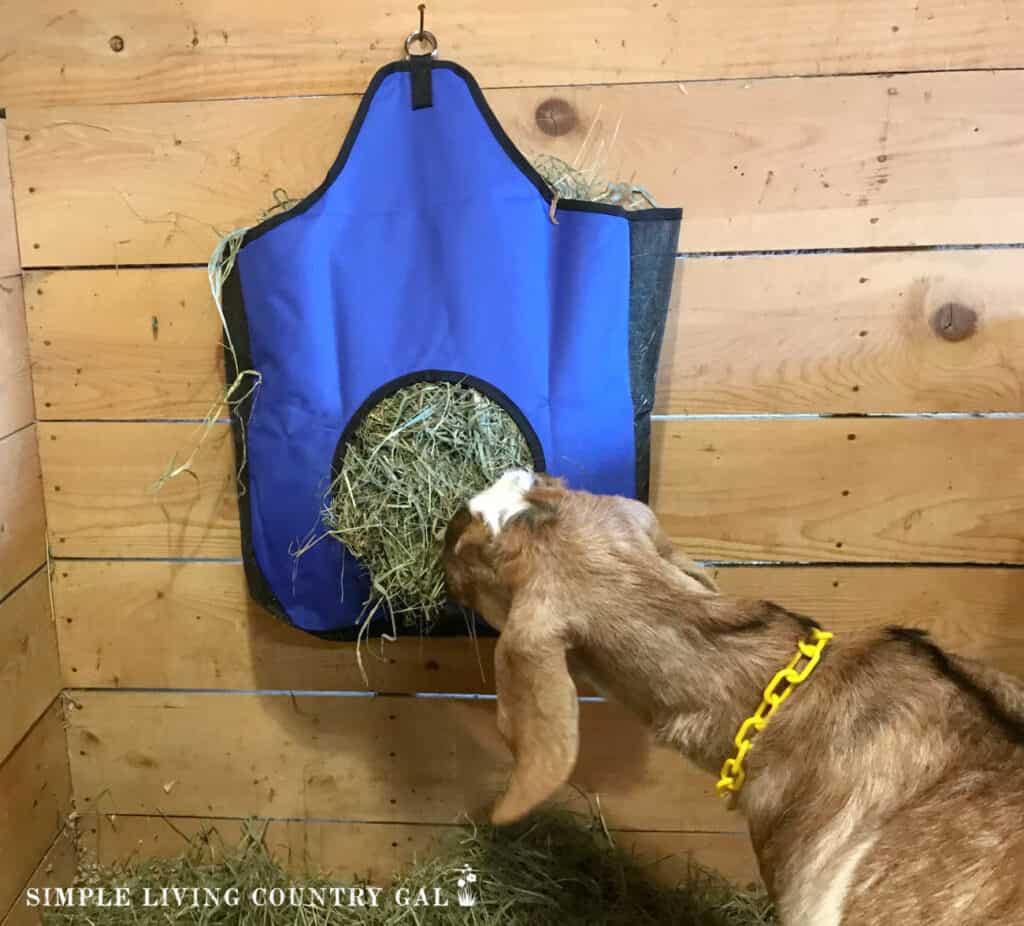
If you have a small pen, bag feeders are a great option because they do not take up alot of space. If you have more room, you can DIY a corner feeder with left over fencing.
You can see you do not need a lot of space for a birthing pen, just enough room for the doe and her kids to move around comfortably without being overcrowded. You want to have enough room so mom can move around without stepping on her new kids.
When should you move does to a birthing pen?
More often than not our does seem to deliver pretty much on schedule. If you want to know when your goats are due, you can jump over to our post, 13 SIGNS TO WATCH FOR WHEN YOUR GOAT IS ABOUT TO KID.
Our Birthing Routine:
- Watch for the final signs of kidding in our goat.
- Move her to a birthing stall.
- Monitor her progress and watch for signs that she needs assitance.
SLCG Pro Tip: Try not to move your does over too quickly, as goats like to remain with their herd for as long as possible. Knowing the signs to watch for prior to goat kidding will be quite helpful, not only in knowing when to move your goats but also in having the rest of your supplies ready as well.
How do you move a goat that is kidding?
The trick to getting your goat into a birthing stall is to be slow and patient. Goats do not like to be forced into anything, and even less so when they are about to kid. If your goats are not trained, gently walk your doe over to the stall talking gently to reassure her all is well.
You can also use a handful of fresh hay, a treat, or a feed bowl of grain to make the job a bit easier. Read my post on How to Easily Train Your Goats to be better prepared for kidding and other important tasks.
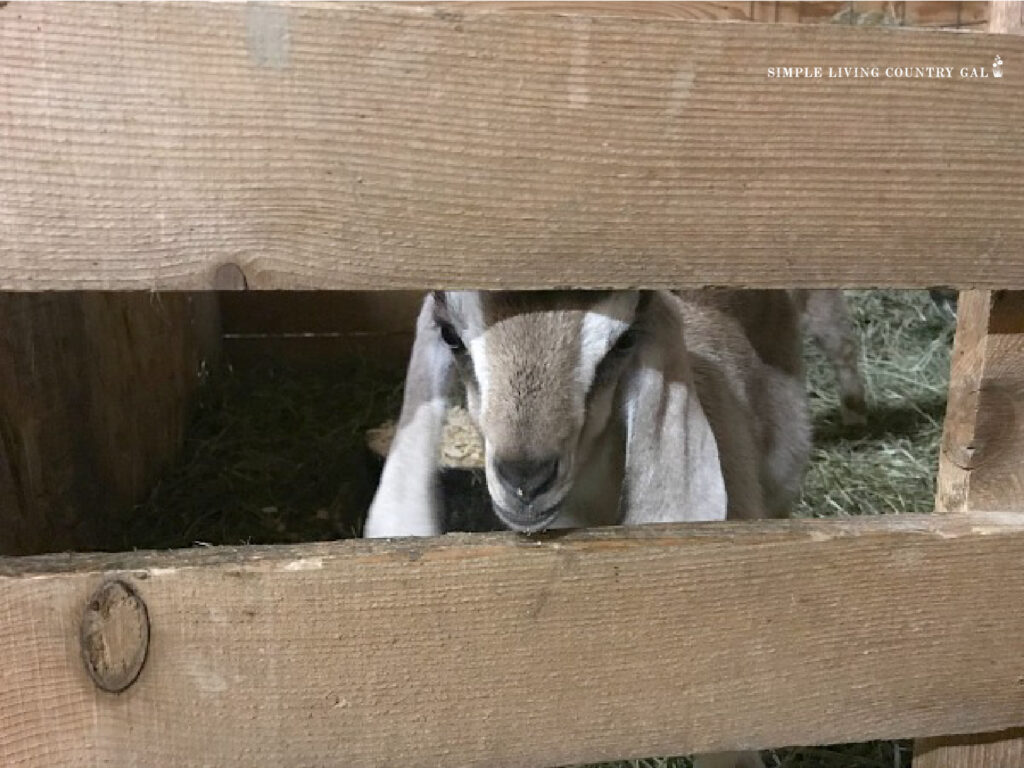
Once your doe is in the birthing stall, you will want to keep an eye on her. Just a heads up, some goats are extremely attached to their herd and a doe may panic if she is unable to see the other goats.
If you notice this and your setup allows, try removing a board or two so she is able to see into the main pen. You can also move another goat with her until she is either in labor or, at the very least, more comfortable with her new surroundings.
This is usually enough to calm a skittish goat down. If this doesn’t work, you may need to stay with her for a bit, giving some extra hay to keep her distracted as she becomes acclimated to her new home.
Birthing Pen Options
Whenever you are dealing with goats, slow and steady is the best approach. Her comfort is the main goal at all times when kidding is involved, so if the birthing pen is not the best way to go, you will need to come up with another option.
#1. Pen within a pen
Another option is to section off a small area of your main pen for goat kidding. You can do this with a few garden stakes and fencing steel panels, which can be easily curved to accommodate the space you have. You can find panels at Tractor Supply or your local feed mill.
#2. Pallet Pen
If steel fencing is not an option, you can attached wooden pallets together in a corner to create a private birthing area.
The goal here is to give the mom and kids a safe place to be so they do not get separated from her or accidentally hurt by a curious herd of goats.
#3. Move the Herd
If making a pen is not an option, you can always send the rest of the herd out to pasture until kidding is done.
#4. Skip the Pen
I do know others that have allowed their goats to kid wherever they are most comfortable whether that be in the barn or outside in the pasture. Living in the north does not allow us that option.
The cold and frigid temps can kill a baby goat in minutes so having them in a secure and supervised area not only keeps them warm but allows us to assist in the delivery and aftercare if needed.
Birthing Stall Checklist for Goat Kidding
#1. Pick the right spot. If you do not have a stall you can use for goat kidding, choose an area away from the herd and secluded enough that the doe will feel safe and secure.
You do not want other goats coming in to investigate a new baby goat kid leaving mama to defend them
#2. Put in fresh clean bedding. I like to use wood chips along with a healthy layer of hay. I have tried sawdust, but it just doesn’t keep things as clean as the wood chips. Hay helps to keep the babies warm by providing a barrier between their little wet bodies and the cold ground.
Once they are cleaned off and able to nurse you can remove the soiled hay and add in fresh clean bedding.
#3. Have a secure bucket of clean water. I change my goat’s water 3-4 times a day year-round. This is because goats are a bit picky and prefer freshwater over dusty.
Also, a goat that routinely drinks tends to be much healthier than those that do not. New moms need lots of water the first few days to fight off dehydration. By watching their water intake I can monitor that they are getting enough.
If I see they are not, I will add Blackstrap Molasses. My goats love molasses, and this always encourages them to drink. Another bonus is the sugar gives your goat mom a bit of an energy boost, keeping them interested in their new baby goat kids. It is important that you make sure the water is always up and out of reach of the babies.
Do goat kids need water?
Newborn goat kids do not need water for the first few days and may not show any interest until 2 weeks of age. Water is not necessary in the beginning as they will get all they need from their mother’s milk. In a birthing pen you will want to keep the water up out of their reach. If you have it low where the kids can get to it, you run the risk of a small and curious kid falling in and drowning. Yes, it does happen so it is always best to err on the side of caution.
#4. Have a bowl for feed. I also keep feed bowls up and away from the kids. Mom can get pretty testy if anyone touches her feed, even her little ones who are just exploring. Keep it up and out of reach.
Even if you do not feed grain to your goats, you will at the very least need to have minerals out for the moms. Kidding is a stress to their bodies and the more you can help them recover the better off your new goat kids will be.
#5. Mineral feeder. As I said above, it is important to support your doe’s health by offering loose minerals or organic kelp. A nice thing about goats is, if they need it they will eat it. So if you notice your goats chowing down on minerals or kelp, they lack something in their diet, and further investigation is needed.
(3Pcs) Lilyang Heavy-Duty Chicken Goat Feeder with Metal Clips, Hanging Fence Feed Trough for Quail Duck Turkey Sheeple Piglet Dog, 4.5 Quart Poultry Livestock Feeder for Mineral Grit Treats



#6. Hay feeder. This is tricky. I use several different hay feeders and it all depends on the size of the goat and the room in the birthing stall. Overall I prefer steel pig panels over everything else. If you choose this route you will need to be careful.
Those little babies are quite curious even at one day old and it seems they can get anywhere. For this reason, you will want to make sure the smallest openings of the steel panel are nearer to the ground to deter the kids from climbing into the feeders and possibly getting stuck or hurt.
Read my post on Hay Feeders for Goats to see different options.
When I first started out learning how to raise dairy goats, I learned the hard way the consequences of not being prepared. I now make sure I have a system in place that not only gives comfort and safety to the mother goat but to her young goat kids as well. I understand that each situation is different so use these tips as suggestions only and not them a cardinal rule.
Make a game plan, set up a timeline, stock your supplies, and set up a birthing pen for your goats and you should have healthy and happy kids in no time!

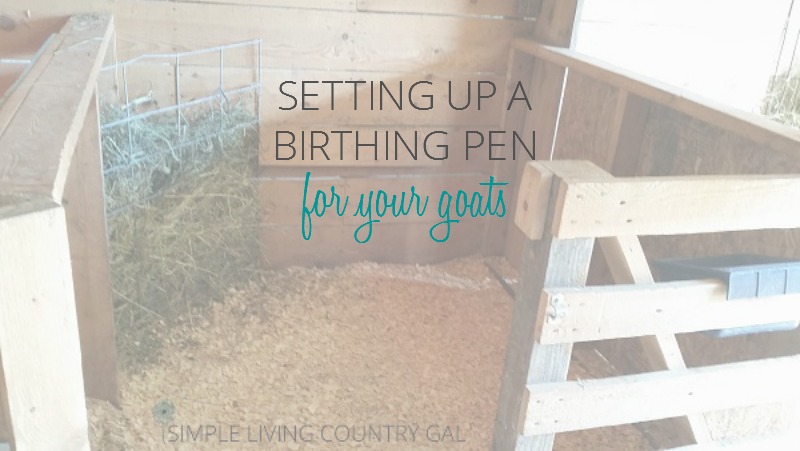
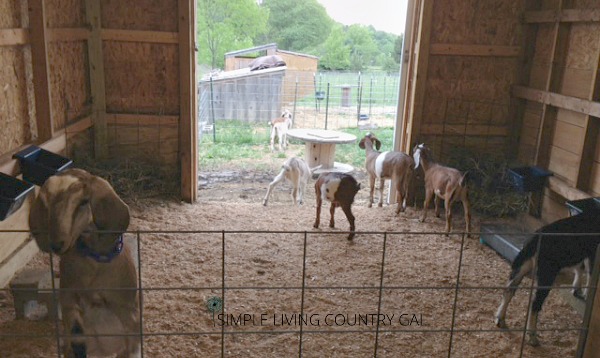
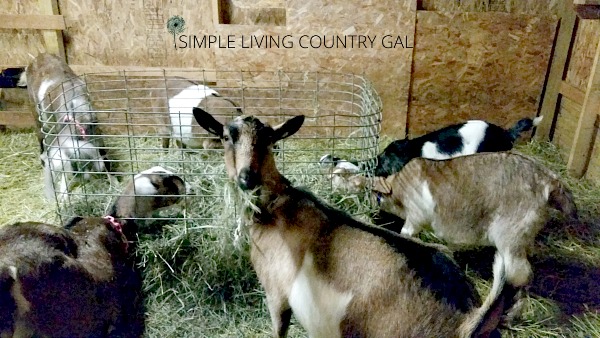
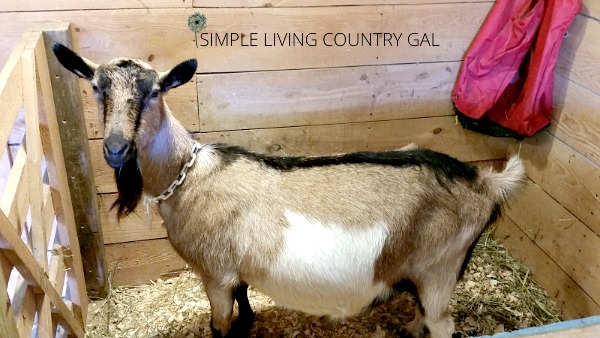





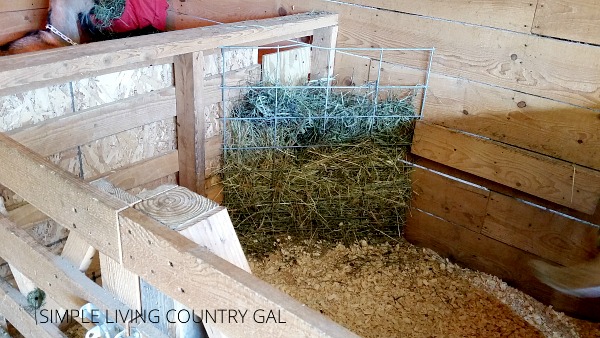
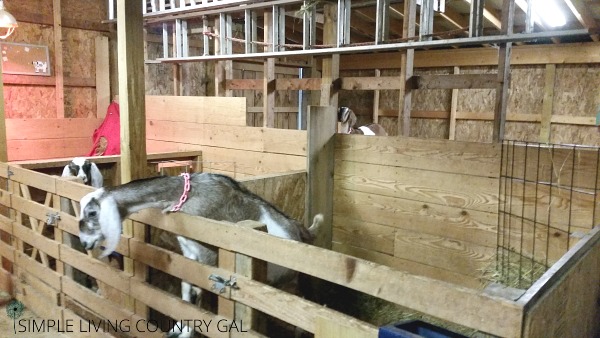
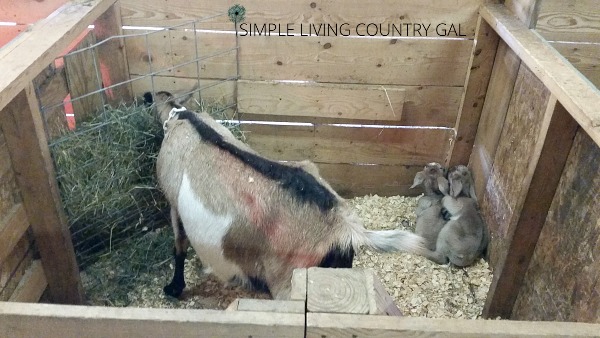




My mini goat is going to kid soon. I knit is,about 5 months. How will I know when she is close. Her udders,are looking full. But not much else. Any ideas or suggestions?
Hi, Sallee,
There are a few things to look for as time gets close for your goat. A full and shiny udder. Just before labor the udder will fill completely up giving it a sort of shiny look and it will feel firm as well. Get into the habit of feeling her udder every time you feed so you know when a change occurs.Ligaments are gone. This is the biggest tell other than the udder. The ligaments can be found where the spine meets the tail. When they are in tact they will feel like two pencils. As labor gets close those pencils will get soft and just before labor begins they will disappear altogether. If you have a goat that is not pregnant, you can compare ligaments so you can get a better idea of what you are looking for. As with the udder, check these daily so you notice changes.
Finally, a puffy or swollen vulva with or without discharge is another big tell and usually happens a few hours to a day before kidding begins.
There are other small signs but these are the main ones. But as an old farmer told me once, you will know labor is coming when you see a nose. haha
Good luck and if you have any questions, please let me know!
If you check out my post on How To Prepare Your Goats For Breeding Season. I have a pregnancy calculator that may help you pinpoint the date.
Tracy Lynn
How long do u leave the mom penned up with the kids after birth? Days? Weeks?
Hi, Dot,
It depends. If everyone is healthy and adjusting well, then just a few days. If it was a hard birth and the kids are overly timid I give them up to two weeks. I also let momma and kids out every day for about 20-30 minutes to stretch their legs.
Hope this helps!
Tracy Lynn
Hi,
Your advice has been great, I do wonder if you have any specific tips on settling them. My girls are very spoilt, they have a raised Wendy house with bunk beds. During the pregnancies one has taken to always sleeping on the top bunk and one out on the veranda. A few weeks ago we moved them in to the barn, closer to the house as there was maintenance going on in there field. a few days in and they still bleated most of the night, and would climb on anything they could get there hooves on…. including climbing over hurdles and sitting on the ride on mower. I notice your kidding stalls are on the ground. Will the girls need/want to be high up be over ridden coming up to the birth? Or do you have any suggestions to help make them feel more at home?
Many thanks,
First time mum to first time mums
Hello, Corrine!
The only thing I provide for my mamas is a lot of straw on the ground and plenty of fresh water and hay. Climbing is for fun and not a necessity, so as long as their stall is clean you will be just fine.
As far as settling down that takes time and patience. And maybe earplugs! Some goats are just loud so be aware of that. Nubians are the most vocal goats out there, but still, not all Nubians yell.
It sounds like you are doing just fine and have a great set up for your gals.
Good luck!
Tracy Lynn
Thank you for the advice. I’ll tell the girls they are not being mistreated! They do have lots of clean straw, branches of there favourite hedge row bushes (a few more times a day than originally thought with every one checking up on them) and clean water.
Thank you again
First time mum to first time mums
I’m a first time goat owner and I’ve had goats for about 2 1/2 years and now I’m ready to begin the birthing process now that my search for two young bachelors has ended. We are currently enlarging our goat shed and adding “birthing suites”. What are the measurements of your stalls? Just curious so I have a guide to go by.
Thank you in advance for your time!
Hi, Suzanne!
I just love that you call them suites! Too cute! Our stalls are 5×6 feet with two that are 6×6. Both seem to work well, but I prefer the large size for multiples.
Hope this helps!
Tracy
What medicine or supplies do you keep on hand for birthing?
I do have medicine and supplies all ready to go, Cole. Have you read my article on setting up a Birthing Kit? That might be better than listing it all here. I think it’s important to know why I have certain things in my kit and that will simply take up too much room in a comment.
How to set up a Birthing Kit for your Goats
I hope this helps!
Tracy Lynn
Hey lady. I love your posts. Very educational. However I am new to the goat world. Just had a baby girl born late Monday night. Doing great and so is momma. However it’s now Wednesday and I think I still see movement on the sides of the moma belly, she is still kindof big on the sides..as if she’s still pregnant with another kid. How can I check to see myself without a huge veterinary bill.? Momma is active, still scratching at the ground and making funny noises but that could be her talking to the new baby girl, we named her “America “. What can I do? Should inlet nature take its course? Thanks..
We also have another female ready to go too so I just want to be more prepared.
Congratulations on the new baby! I am glad they are doing well.
As for momma, did you see her pass her placenta? If so, there are no more babies to be born. If not, then you may need to get help or double check things to be sure. Check mom’s temp to be sure she is normal. Most babies are born withing minutes of the other and if there is still a baby inside I am not sure of it’s health at this point. What side do you see the movement on? If it’s the left side it may be her rumen. Remember you can call a vet for help on the phone without having to pay. I have done this several times in the past and they have helped me through some tricky deliveries. You can also ask for a cost idea as well, sometimes the amount is not quite as bad as we think it may be. I had to take in 2 goats last year, one had a c-section and the other had a stuck triplet. The entire cost for all procedures was $350. A very good bill after what I had been expecting. And we were able to save 3 of the 4 goats because of it. And that was worth the investment. 🙂
Good Luck!
Tracy Lynn